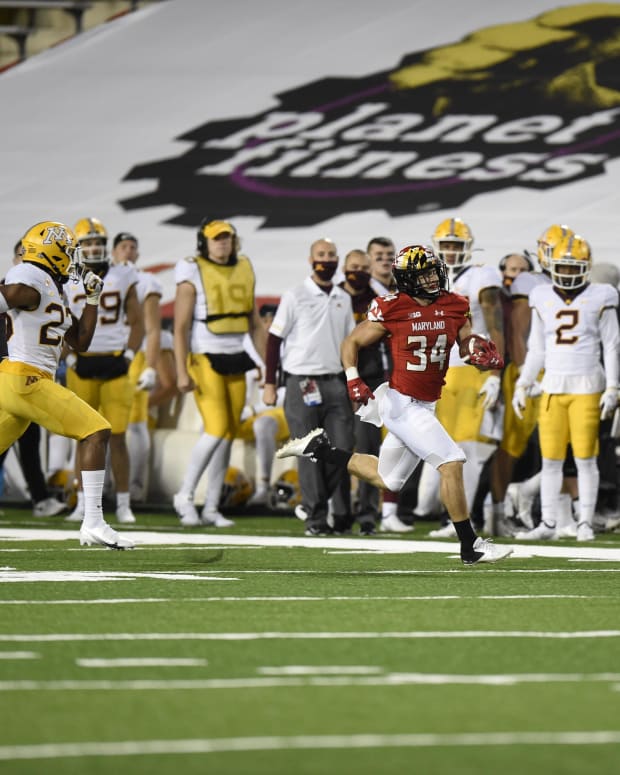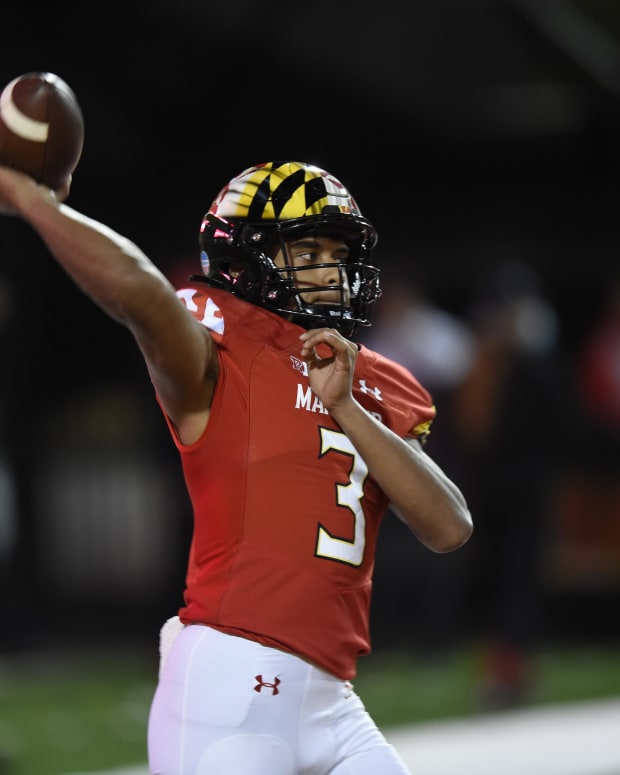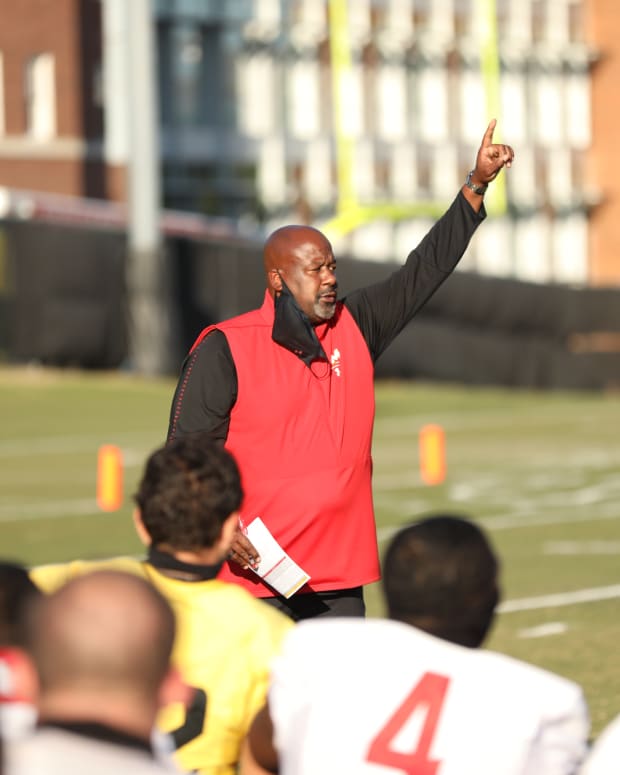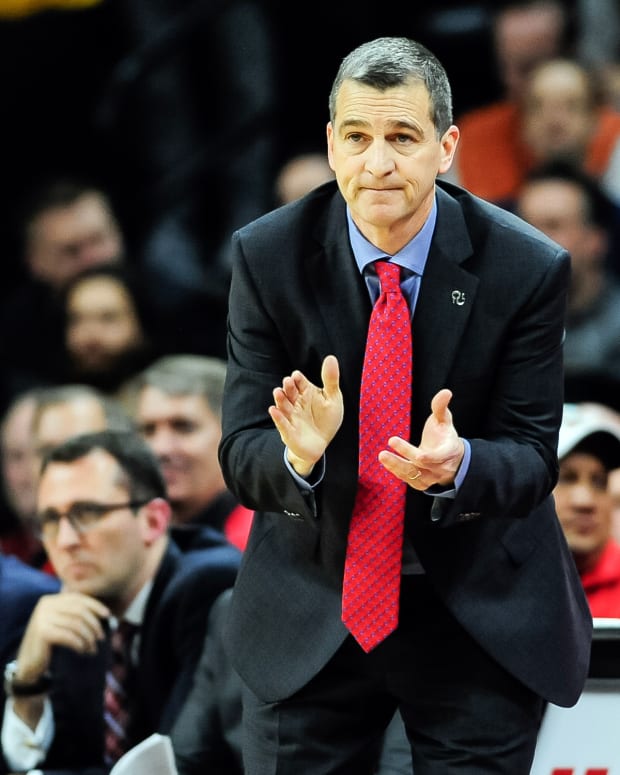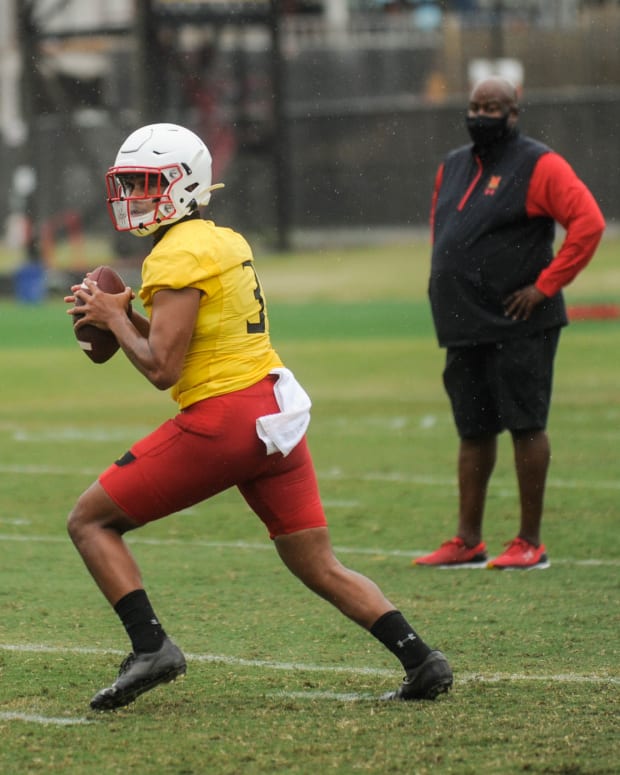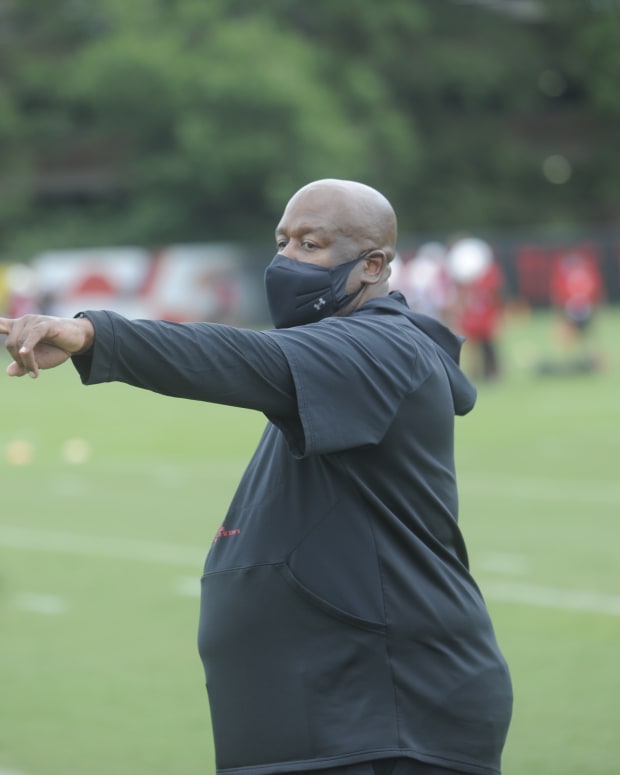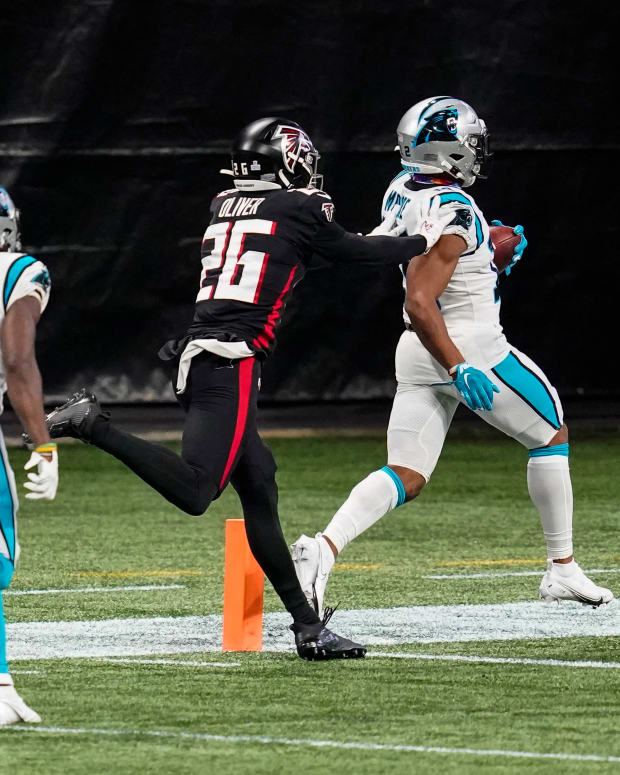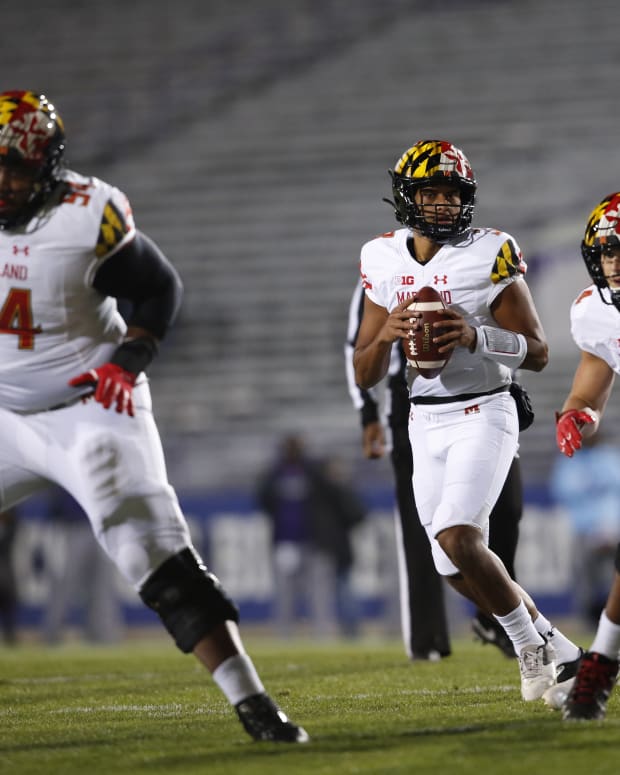Big Ten Roundtable: Team Strengths & Weaknesses
Fall camp is slated to begin in five days for Maryland as the Big Ten continues to finalize the upcoming schedule for the fall season. In anticipation for head coach Mike Locksley and Maryland looking to top last year’s 3-9 record that ended with a seven-game losing streak, we take a look at the biggest unit strength and weakness for the Terps and their Big Ten opponents this fall.
Ahmed Ghafir (Maryland): Maryland’s wide receiver group continues to add quality depth and the blend of talent in the locker room gives position coach Joker Phillips plenty to be excited about. Junior Dontay Demus steps up as arguably Maryland’s top 2021 NFL Draft prospect with the length and ball skills he brings on the outside makes him a mismatch in man coverage. Receiver Jeshaun Jones returns for Maryland while senior slot receiver DJ Turner will hope to lock down the slot, but true freshmen Rakim Jarrett, Corey Dyches, Deajaun McDougle and Nick DeGennaro will get their fair share.
Biggest weakness sits with the defensive line, but frankly, it’s a toss-up between either side of the line. Maryland loses one starter on a defensive line that already struggled with maintaining much push inside, a big reason why the Terps’ defense ranked at the bottom of nearly all statistical categories a season ago. The offensive line will need to take a step forward, but with another offseason between center Johnny Jordan and tackles Marcus Minor and Jaelyn Duncan, there’s greater optimism to take a step forward. JuCo signee Johari Branch will play a key role along the starting rotation, but if Maryland wants to be serious in the Big Ten, it starts with improvements on both sides in the trenches.
Matthew Stevens (Illinois): In 2017, Lovie Smith made the decision of a long-term play with his offensive line. For the first time in school history, Illinois started at least three freshmen in the same game on the offensive line. And they were undersized, overmatched and were run over physically and mentally throughout that campaign. In 2020, that decision is now ready to be paid off as Illinois starts four seniors and a junior (Kendrick Green) who might be one of the strongest and best guards in the Big Ten Conference. It is this offensive line that, if they can remain healthy, will be in charge of keeping Brandon Peters upright and control the line-of-scrimmage for a running game still needing to establish a go-to tailback. However, Pro Football Focus has already published that Illinois has the most experienced production returning from any five-man unit in the Big Ten.
The defensive line returns just 11 of the team’s 98 tackles for loss last season and worse off, a unit that struggled last year to get a pass rush at all without Oluwole Betiku Jr., will not have him at all in 2020 after he went undrafted this past April. Jamal Woods and Calvin Avery are veterans the coaching staff can take over at interior line positions but the search for feared edge rushers in Lovie Smith’s 4-3 scheme continues. As good as the second and third units of the Illinois defense are expected to be, if they can’t generate a pass rush with new defensive line coaches (Al Davis - defensive tackles; Jimmy Lindsey - defensive ends), it’ll be a long year for the Illini.
John Bohenkamp (Iowa): Iowa’s wide receiver group is one of the best under Kirk Ferentz, and the offensive line will still be strong even without Tristan Wirfs. It will be interesting to see how the defensive line looks, and there are concerns about the secondary as well.
Team chemistry may be the big thing here. The accusations of racial disparities within the program led to an emotionally raw team meeting at the start of voluntary workouts, but in press conferences since then players have talked about greater unity inside the locker room and the weight room.
Brandon Brown (Michigan): Michigan is going to be strong on defense and the unit will be led by its dynamic duo of defensive ends, Aidan Hutchinson and Kwity Paye. The pair is affectionately known as “Salt and Pepper” and should set the tone for Michigan’s defense, which also has a really strong linebacking corps and dynamic secondary. From front to back, the defense is stout, but Hutchinson and Paye will definitely get the attack going.
On offense, there are a lot of playmakers. The running back room is crowded with returning starters Zach Charbonnet and Hassan Haskins, senior Chris Evans, who sat out last year, and early-enrolled freshman Blake Corum, who has a unique burst to his game. Option one and two at receiver is Nico Collins and Ronnie Bell, with speedy youngsters behind them. Throw in a potential all-conference tight end in Nick Eubanks and whoever wins the starting quarterback job should have a lot of toys to play with. We don’t know who the starter is yet, but both are capable and talented. To me, the biggest question mark is the offensive line. Jim Harbaugh and his O-line coach Ed Warinner have to replace four starters, which is no easy task. Presumed left tackle Ryan Hayes and Andrew Stueber both have starts under their belt but not many. I’m not sure I’d call it a weakness, because there is talent there, but we just haven’t seen it on the field yet.
McLain Moberg (Michigan State): Michigan State saw their winningest coach of all-time step down in February, hired Mel Tucker to replace Dantonio, and lost out on a traditional spring. I'm not sure MSU has had time to find their strengths and weaknesses yet. They lost eight starters on defense and still don't know who their quarterback is.
Their top returners feature a solid group of running backs with Elijah Collins leading the way and DE Jacub Panasiuk replacing Kenny Willekes on the edge.
Brendan Gullick (Ohio State): Strengths: Quarterback, Offensive Line, Wide Receiver and Linebacker. The Buckeyes return the heartbeat of their Big Ten title team with Justin Fields back under center and a star-studded young receiving corps led by Biletnikoff Award watch lister Chris Olave and Garrett Wilson, who combined for over 1,200 yards and 17 scores last year. Incoming freshmen Julian Flemming (the No. 2 overall recruit in the nation (247 Sports) and Jaxon Smith-Njigba are five-star prospects and are primed to get legitimate game-reps early in their careers. The Buckeye offensive line returns three guys who turned down the NFL last year as well. On the defensive side of the ball, the linebacking corps features three Butkus Award watch listers in Tuf Borland, Pete Werner and Baron Browning - the only school in the country with three linebackers on that list.
Weaknesses: It’s nearly impossible to find any true weaknesses on a team that is at a minimum expected to compete for a national title this year. But perhaps it’s at least fair to point out a few uncertainties. JK Dobbins left for the NFL and his primary backup last year (Master Teague III) suffered a significant Achilles injury that puts his 2020 season in doubt. But to mitigate those losses, former Oklahoma running back Trey Sermon grad-transferred to Columbus and should see the lionshare of the carries. He’s rushed for over 2,000 yards the last three years. At defensive back, the Buckeyes lost first round picks Jeff Okudah and Damon Arnette to the draft in April, but Shaun Wade is set to follow in their footsteps. Beyond Wade though, there are some question marks in the secondary. And of course, any team that loses Chase Young is going to feel that impact. But Zach Harrison, Tyreke Smith and Javontae Jean-Baptiste have all shown high upside and should be great in the pass rush this year.
Mark Wogenrich (Penn State): Strengths: Running back and linebacker. Penn State might have two of the nation’s best prospects at their positions in RB Journey Brown and LB Micah Parsons. And Brown will continue to share carries in a loaded backfield with Noah Cain and Devyn Ford. In a normal season, Penn State could have two 1,000-yard rushers. Parsons is perhaps the conference’s best defensive player, but the Lions are well stocked at linebacker with Jesse Luketa, Ellis Brooks, Brandon Smith and Lance Dixon. That depth will free them to move Parsons around the field creatively.
Weaknesses: Wide receiver. Penn State lost KJ Hamler to the NFL and former 5-star prospect Justin Shorter to a transfer to Florida. Junior Jahan Dotson is a worthy successor to Hamler in the slot, but the Lions haven’t been able to retain a big receiver the past four years. A freshman class of five receivers will have plenty of opportunity.
Jake Kocorowski (Wisconsin): strengths--I have to look at Wisconsin’s defensive line and secondary here. Key contributors return to both of those units from a year ago, and that should help Wisconsin’s linebackers who are replacing production.
Weaknesses: I don’t know if I can say weaknesses with any group for UW, but I think an area to watch is outside linebacker. Baun recorded 12.5 sacks and 19.5 tackles for loss in his final year at Wisconsin. The next closest from the group was Noah Burks with two sacks and seven tackles for loss. Can he, Izayah Green-May, Jaylan Franklin, Spencer Lytle, or even a true freshman like Nick Herbig emerge to put pressure on opposing quarterbacks?
